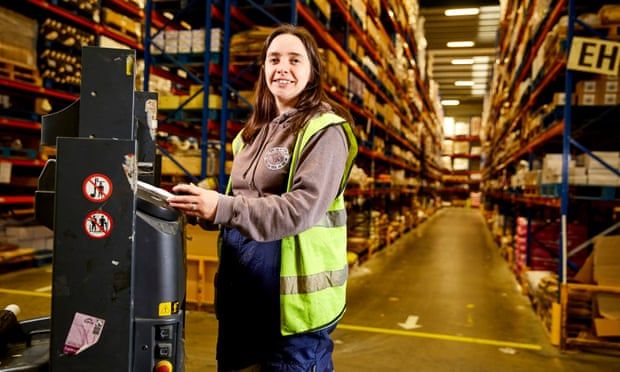Introduction
Trucking is the backbone of Australia’s supply chain, connecting rural producers to urban markets and ensuring goods flow smoothly across the vast continent. With an acute shortage of qualified heavy vehicle operators, truck driver jobs in Australia have become highly sought-after positions, offering competitive salaries, career stability, and opportunities for overseas candidates. However, navigating the visa sponsorship and licensing landscape can be daunting. In this comprehensive guide, we’ll explore everything from visa options and licensing requirements to application tips and job search strategies. Whether you’re an experienced overseas driver or a newcomer considering a career change, this article will equip you with the knowledge to hit the road in Australia.
Australia’s trucking sector is diverse, encompassing local courier services, regional freight runs, long-haul interstate routes, and specialized mining and agricultural transport. Each segment demands different skill sets, from urban delivery in congested cities to operating heavy haulage vehicles across remote outback roads. The lifestyle can be rewarding, offering independence and the chance to see parts of the country few get to experience. However, it also comes with challenges like extended time away from home, strict safety regulations, and the physical demands of the job. A key pathway for many employers is the Australia Subclass 482 (TSS) Visa: Temporary Skill Shortage Guide.
Results
#1. What is your current employment status?
#2. What is your preferred work location?
#3. What type of work are you most interested in?
#4. What is your highest completed level of education?
#5. Which continent are you currently living in?
#6. What is your gender?
Understanding the Demand for Truck Drivers in Australia
Australia’s vast geography and dispersed population centers mean that road transport plays a critical role in moving goods across long distances. From fresh produce in Queensland to mining equipment in Western Australia, heavy vehicles keep the economy ticking. Over the past decade, industry data shows a steady increase in freight volumes, driven by population growth, e‑commerce expansion, and infrastructure projects.
The Australian Trucking Association reports a looming shortfall of qualified drivers, with estimates suggesting a gap of over 20,000 positions by 2025. Contributing factors include an aging workforce—where the average truck driver age is around 50—and the challenges of training and licensing newcomers. This persistent demand has led to attractive salary packages, sign‑on bonuses, and visa sponsorship opportunities to attract overseas talent.
Demand varies by region and sector. Urban areas like Sydney and Melbourne require drivers adept at navigating busy city streets and adhering to tight delivery windows, while remote mining and agricultural operations often offer higher pay rates to compensate for isolation and extended shifts. Specialized roles, such as oversize load drivers and tanker operators, require additional endorsements and can command premium wages.
Visa Sponsorship Options for Overseas Drivers
For international truck drivers, securing employer sponsorship is a vital first step. The most common pathway is the Temporary Skill Shortage (TSS) visa, which allows approved employers to sponsor skilled workers when local talent is unavailable. Employers must demonstrate genuine labour shortages and meet sponsorship obligations, including paying market‑rate salaries and providing training opportunities for Australian staff.
Beyond the TSS visa, candidates may explore permanent employer‑sponsored visas like the Employer Nomination Scheme (ENS), which offers a pathway to permanent residency after two years in the nominated position. Additionally, state‑nominated visas can provide alternative routes for drivers willing to work in regional areas facing critical skills shortages.
In addition to employer‑sponsored visas, some drivers may qualify for family‑stream visas, enabling spouses or partners to accompany them. For detailed information on partner and family pathways, refer to the Australian Partner and Family Visa Options.
Licensing Requirements and Pathways
Before you can operate heavy vehicles in Australia, you must hold a valid Heavy Vehicle Licence (HV). Licensing is regulated by state and territory authorities, with categories ranging from Medium Rigid (MR) to Multi‑Combination (MC). Most truck drivers pursue a class HR (Heavy Rigid) or HC (Heavy Combination) licence, depending on the vehicle type and trailer configuration.
The process typically involves completing a training course, passing a knowledge test, and demonstrating practical driving skills. Many Registered Training Organisations (RTOs) offer accredited courses, which can be completed in a few weeks. International drivers may need to convert existing licences through a recognition of prior learning (RPL) process, which assesses your overseas qualifications and experience.
While Australia’s licensing scheme is nationally recognized, international drivers often need to convert existing licences. For example, holders of certain European licences may find parallels with the Blue Card Scheme used in the EU, although conversion processes and additional assessments vary by jurisdiction.
Sponsorship and Application Process
Securing sponsorship involves multiple steps. First, you must obtain a job offer from an approved sponsor. The employer lodges a nomination application with the Department of Home Affairs, demonstrating labour market testing and training benchmarks. Once the nomination is approved, you can apply for the TSS visa subclass, submitting evidence of your skills, qualifications, and work history.
The visa application requires health examinations, character checks, and proof of English proficiency, although heavy vehicle roles often qualify for English exemptions. Processing times vary but typically range from 4 to 8 weeks. Fees include the nomination charge, visa application fee, and possible health surcharge, so budgeting is essential.
Many aspiring drivers enhance their eligibility by completing recognized training programs. Programs such as Skilled Trades Apprenticeships in Australia with Visa Pathways offer structured on‑the‑job training, helping you meet both skill and visa requirements simultaneously.
Finding Truck Driving Jobs in Australia
Once you understand the visa and licensing requirements, the next step is to secure a job. Australia’s logistics sector relies heavily on recruitment agencies, online job boards, and direct employer outreach. Key platforms include Seek, Indeed, and specialized transport recruitment sites. You can also connect with employers through industry associations, such as the Australian Trucking Association.
Networking with current drivers and attending job fairs can provide valuable insights into company cultures, pay rates, and career progression opportunities. Many regional employers advertise vacancies on local council websites or community noticeboards, particularly in mining and agricultural regions where specialized heavy vehicle operators are in demand.
When preparing your resume, highlight your heavy vehicle endorsements, total driving hours, and any specialized training—such as hazardous materials handling or fatigue management certificates. A tailored cover letter explaining your international experience and commitment to safety can set you apart.
Salary Expectations and Career Growth
Truck driver salaries in Australia vary by licence class, region, and employer. Entry‑level positions typically start around AUD 60,000 per year, while experienced long‑haul drivers can earn upwards of AUD 90,000, with overtime and allowances for remote work boosting total compensation. Some specialized roles, such as multi‑combination drivers or oversize load operators, may command salaries exceeding AUD 100,000.
In addition to base pay, many employers offer bonuses for safe driving records, referral incentives, and health benefits. Superannuation contributions add to total remuneration, typically around 11% of your salary. Drivers working in fly‑in fly‑out (FIFO) arrangements can earn additional allowances for travel and accommodation.
Career progression pathways include roles like fleet manager, transport supervisor, and safety coordinator. Continuous upskilling—through advanced endorsements and leadership training—can open doors to management positions or niche sectors, such as heavy haulage and oversize transport.
Related Visa-Sponsored Opportunities
For those exploring broader career options or planning future moves, here are three categories of visa‑sponsored job opportunities globally, with approximate salary expectations converted to AUD.
Top Visa-Sponsored Jobs in Canada (Salary in AUD)
| Job Role | Salary Expectation (AUD) |
|---|---|
| Retail Management Jobs in Canada for Immigrants with Sponsorship | 55,000 – 75,000 |
| No IELTS Required Jobs in Canada with Visa Sponsorship | 50,000 – 70,000 |
| Easiest Jobs to Get Visa Sponsorship for in Canada (2025 Guide) | 45,000 – 65,000 |
Top Visa-Sponsored Jobs in Germany (Salary in AUD)
| Job Role | Salary Expectation (AUD) |
|---|---|
| Engineering Roles in Germany with Sponsorship | 70,000 – 90,000 |
| Warehouse Operative Jobs in Germany with Visa Assistance | 45,000 – 60,000 |
| Work Opportunities in Germany for English Speakers (Visa Guide) | 55,000 – 75,000 |
Top Visa-Sponsored Opportunities in New Zealand (Salary in AUD)
| Job Role | Salary Expectation (AUD) |
|---|---|
| Nursing Opportunities in New Zealand for Foreign Nurses + Visa Info | 65,000 – 85,000 |
| New Zealand Green List: Fast-Track Residency for Skilled Workers | 60,000 – 80,000 |
Tips for a Successful Visa Application
Verify Documentation
Ensuring your paperwork is in impeccable order is the foundation of a smooth visa process. Start by checking that your passport has at least six months’ validity beyond your intended arrival date. Have your heavy‑vehicle licence, training certificates, and any foreign qualifications professionally translated (if not already in English) and certified by a recognized authority. Scanned copies should be clear, and originals must be presented at your visa interview or on arrival. In similar skilled‑worker streams—like Early Childhood Educator Jobs in Australia with Visa Sponsorship—applicants often encounter delays when teaching credentials aren’t properly authenticated. Treat your truck‑driving documents with the same level of scrutiny to avoid costly setbacks.
English Proficiency
Although many heavy‑vehicle roles qualify for an IELTS exemption, demonstrating functional English can bolster your application and reassure employers. You can submit alternative test results (e.g., PTE Academic or OET) or provide a letter from a previous employer confirming you operated safely in English‑speaking environments. For inspiration, candidates securing No IELTS Required Jobs in Canada with Visa Sponsorship often leverage on‑the‑job references to meet language benchmarks. Likewise, some visa streams mirror pathways outlined in Scholarships in Australia Without IELTS/TOEFL, where proof of prior study in English substitutes for formal testing.
Health and Character Checks
Australia mandates comprehensive health examinations—covering chest X‑rays, blood tests, and general medical assessments—to protect public health. You’ll also need police clearance certificates from every country you’ve lived in for 12 months or more over the past decade. A spotless driving record is equally critical: traffic offences or a history of DUI can trigger visa refusals. This rigor mirrors the scrutiny faced by applicants in the USA Green Card through Employment: EB Categories Explained process, where both health and moral character are paramount.
Professional References
Strong, industry‑specific references can set you apart. Aim to collect at least two letters from past supervisors or RTO trainers detailing your hours logged, endorsements held (e.g., tanker or multi‑combination), and safety record. References from recognized industry bodies—such as the Australian Trucking Association—carry extra weight. Tech‑sector professionals often tap into lists like Companies Known for Sponsoring Visas in the UK Tech Sector; likewise, transport candidates should highlight endorsements from high‑reputation employers.
Budget for Fees
Visa and licensing costs can accumulate quickly. Anticipate the following expenses:
- Visa nomination and application fees (TSS visa from AUD 2,645)
- Health examination charges (AUD 300–500)
- Police clearances (AUD 50–100 per certificate)
- Licence conversion or upgrade courses (AUD 1,500–3,000)
- Translation and certification fees (AUD 50–150 per document)
If you’re juggling study and work, consider funding models like the Post‑Graduation Work Permit (PGWP) in Canada, where fees vary by program, or explore cost‑saving opportunities in Top 10 Fully Funded Scholarships for International Students Worldwide (2025–2026) to offset training expenses.
Stay Informed
Visa regulations and labour‑market demands evolve constantly. Bookmark the Department of Home Affairs’ updates, but also follow industry news portals and professional forums. For a global perspective, see how other markets manage driver shortages—such as Work Opportunities in Germany for English Speakers (Visa Guide)—or monitor fast‑track schemes like New Zealand’s Green List: Fast‑Track Residency for Skilled Workers to understand emerging trends in skilled migration.
Consider a Migration Agent
🎓 Must Read
Engaging a MARA‑registered migration agent can streamline complex cases—especially if you have atypical work histories or dual‑qualification scenarios. Agents handle paperwork, flag potential issues early, and liaise with the Department on your behalf. They often specialize in family streams too; for instance, many rely on precedents set by Family Reunification Visas in Germany or UK Spouse, Partner, and Family Visas to advise clients on best practices.
Pre‑Departure Orientation
Before you board your flight, invest time in a tailored orientation. Many RTOs and recruitment agencies offer modules on Australian road rules, fatigue‑management regulations, and workplace health & safety standards. This mirrors the pre‑departure briefings provided for Chef Positions in Australia: Visa Sponsorship for Culinary Professionals, where understanding local food‑safety laws is critical. Even if you’re accustomed to international driving, these sessions help you acclimate to Australia’s unique conditions—like left‑hand driving, heavy‑load permits, and rest‑break requirements—ensuring you arrive job‑ready and compliant.
Conclusion and Next Steps
Securing a truck driver job in Australia with visa sponsorship involves careful planning, from understanding licensing pathways to navigating immigration requirements. By choosing the right visa subclass—such as the TSS visa—preparing your documentation, and connecting with reputable employers, you can fast‑track your entry into one of Australia’s most in‑demand professions.
Begin by researching approved sponsors, upgrading your qualifications if needed, and leveraging professional networks to find the best opportunities. With dedication and the right guidance, you’ll be well on your way to a rewarding career on Australia’s roads. Safe travels!









